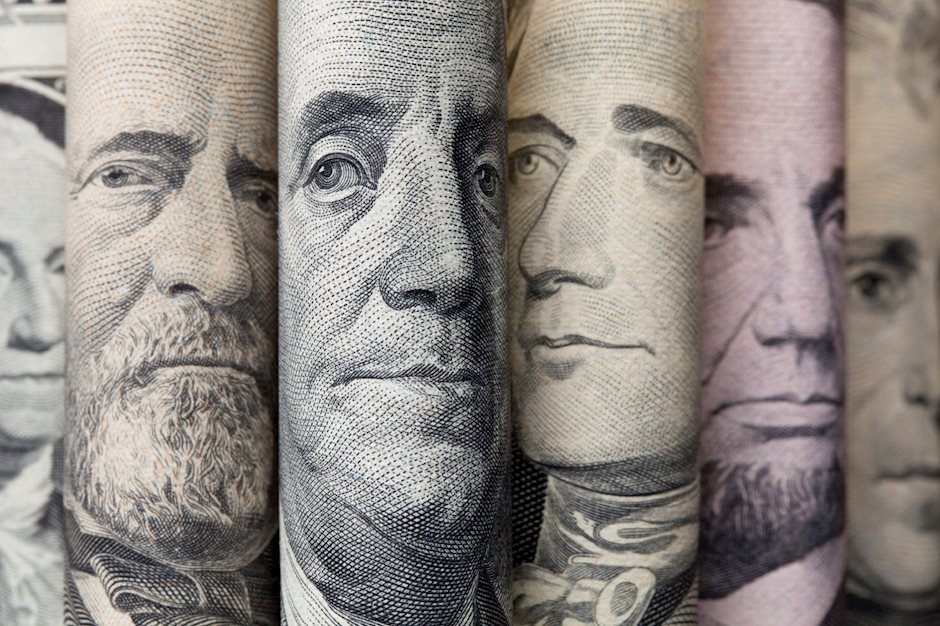US Dollar tries to keep gains for a fourth straight day despite flat CPI
- The US Dollar sees earlier gains cut in half after inflation for November falls in line of expectations.
- Traders boost bets for a last rate cut next week from the Fed.
- The US Dollar Index (DXY) is trading around 106.50 and fails to jump higher.

The US Dollar (USD) is holding on to minor gains on Wednesday after the US Consumer Price Index (CPI) came broadly in line of expectations. No real outliers with the Monthly Headline Inflation coming in at 0.3% while the monthly Core Inflation measure ticked up by 0.3% as well. Immediately after the numbers, the Greenback eased and bets for a december rate cut increased.
All US data for this Wednesday are out of the way. Main focus will now shift to Thursday with the US Producer Price Index and the lighter Import/Export Price Index on Friday. On Thusday focus will shift to Europe, where the European Central Bank is set to deliver its last rate decision for 2024.
Daily digest market movers: Bets for rate cut jump
- The US Consumer Price Index (CPI) release for November came in as no surprise:
- The monthly headline Inflation came in as expected at 0.3%, from 0.2%. The yearly gauge ticked up to 2.7% from 2.6%.
- The monthly core inflation increased by 0.3%, the same pace as the previous month. The yearly core measure was also steady at 3.3%.
- Equities are shrugging off their negative performance for this Wednesday. European equities are turning green while US equities are jumping higher.
- The CME FedWatch Tool is pricing in another 25 basis points (bps) rate cut by the Fed at the December 18 meeting by 86.1%. A 13.9% chance is for rates to remain unchanged.
- The US 10-year benchmark rate trades at 4.21%, retreating a touch from its peak this week at 4.24% on Tuesday.
US Dollar Index Technical Analysis: The window of opportunities is closing fast
The US Dollar Index (DXY) is defining a bandwidth that could hold until next year given the limited amount of data points left. The US Consumer Price Index (CPI) release will likely determine if that bandwidth will be between 105.50 and 107.00 or between 105.50 and 108.00.
US Dollar bulls have reclaimed 106.52 (April 16 high), which was a hard bargain to get through. Next up is the 107.00 round level and 107.35 (October 3, 2023, high). Further up, the high of November 22 at 108.7 emerges.
Looking down, the pivotal level at 105.53 (April 11 high) comes into play before heading into the 104-region. Should the DXY fall all the way towards 104.00, the big figure and the 200-day Simple Moving Average at 104.03 should catch any falling knife formation.
US Dollar Index: Daily Chart
Risk sentiment FAQs
In the world of financial jargon the two widely used terms “risk-on” and “risk off'' refer to the level of risk that investors are willing to stomach during the period referenced. In a “risk-on” market, investors are optimistic about the future and more willing to buy risky assets. In a “risk-off” market investors start to ‘play it safe’ because they are worried about the future, and therefore buy less risky assets that are more certain of bringing a return, even if it is relatively modest.
Typically, during periods of “risk-on”, stock markets will rise, most commodities – except Gold – will also gain in value, since they benefit from a positive growth outlook. The currencies of nations that are heavy commodity exporters strengthen because of increased demand, and Cryptocurrencies rise. In a “risk-off” market, Bonds go up – especially major government Bonds – Gold shines, and safe-haven currencies such as the Japanese Yen, Swiss Franc and US Dollar all benefit.
The Australian Dollar (AUD), the Canadian Dollar (CAD), the New Zealand Dollar (NZD) and minor FX like the Ruble (RUB) and the South African Rand (ZAR), all tend to rise in markets that are “risk-on”. This is because the economies of these currencies are heavily reliant on commodity exports for growth, and commodities tend to rise in price during risk-on periods. This is because investors foresee greater demand for raw materials in the future due to heightened economic activity.
The major currencies that tend to rise during periods of “risk-off” are the US Dollar (USD), the Japanese Yen (JPY) and the Swiss Franc (CHF). The US Dollar, because it is the world’s reserve currency, and because in times of crisis investors buy US government debt, which is seen as safe because the largest economy in the world is unlikely to default. The Yen, from increased demand for Japanese government bonds, because a high proportion are held by domestic investors who are unlikely to dump them – even in a crisis. The Swiss Franc, because strict Swiss banking laws offer investors enhanced capital protection.
Author

Filip Lagaart
FXStreet
Filip Lagaart is a former sales/trader with over 15 years of financial markets expertise under its belt.


















